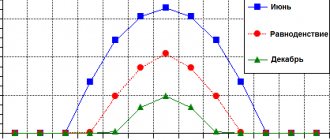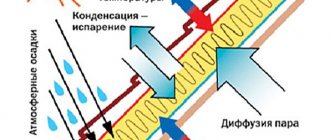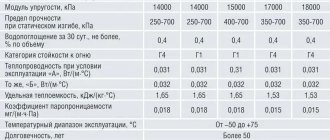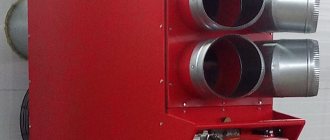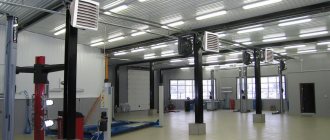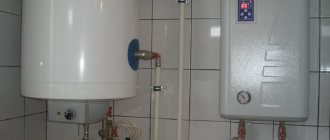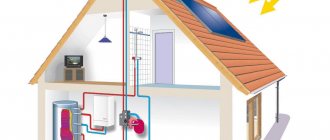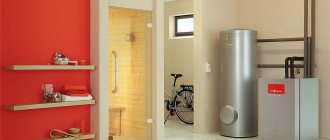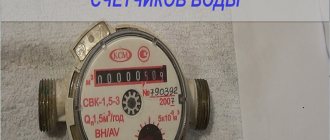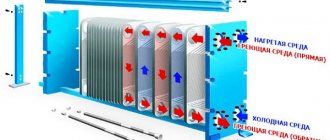Are solar systems in demand?
Already, more than 160 million m2 of these panels have been installed worldwide. China and Japan are leading. Some European countries are not lagging behind, where heat generation by such systems is about 5% of the total required.
Not many years will pass and many countries will abandon gas and coal completely. For example, in Ukraine, where tariffs are quite high, such systems are installed in large quantities. A one-time investment will allow you to achieve energy independence, even if only partial. And it’s not just about saving money, such installations are environmentally friendly and do not pollute the environment.
Advantages of these systems
There are now many alternative energy sources, including solar panels, wind generators, heat pumps, etc. However, it is solar collectors that are gaining increasing popularity, there are a number of reasons for this:
- The cost of the system is the lowest of all alternative sources
, this is due to the simple manufacturing and installation technology. - Simple installation
, which you can do even yourself if you have certain knowledge and skills. - Easy to use
, no special skills are needed to monitor them. - Low repair cost
, all system parts are inexpensive. There are no large components that require complete replacement. You can carry out the repair yourself, having first studied the device a little. - Versatility
. The solar system can be used for heating water and heating, without additional energy conversion cycles. You can select the number of panels based on their specific needs.
A little about the disadvantages
Any system has disadvantages and solar collectors are no exception.
They occupy a significant area, one panel takes up an average of 2-3 m2. The efficiency of their work depends on the climate zone where they are used. They are also very climate dependent; in winter their efficiency is minimal, while energy consumption for heating is maximum. This makes solar collectors not very efficient for heating. As many manufacturers claim, they are able to cover up to 30% of heating costs.
However, this is all relative. More panels and larger capacity storage tanks will increase this %. But, additional equipment will also increase the cost of the system.
Solar system
Heating a private home is a complex and responsible issue, the solution of which requires expense and effort. Tariffs and terms of supply of resources sometimes become excessively high and force us to look for more rational and economical methods of heating without unnecessary expenses. One option could be a solar system based on completely free solar energy .
Every day a gigantic amount of gigawatts fall on the earth's surface, which are dissipated in the atmosphere and absorbed by the earth's crust. The amount of energy is large, but few possibilities have yet been invented to receive and store it. Solar systems for heating a home are one of the ways to use solar energy for practical purposes .
What it is?
A solar system is a set of devices used to receive thermal energy from the Sun for heating a home or for other purposes. It is a source of heating the coolant for the heating circuit of the house. Heating is carried out either directly or indirectly, through a heat exchanger.
The solar system includes:
- Collector. A device that receives energy from the Sun and transfers it to the coolant in one way or another.
- Heating circuit of the house.
The main element of the system is the collector. It is a source of heating the coolant. The rest is a conventional radiator heating system, or (better) underfloor heating.
It must be taken into account that solar systems for heating water , the price of which can be quite high, are not always able to provide complete and sufficient heating . This depends on the climatic and weather conditions in the region, the location of the house and other factors. Some experts believe that this type of heating can only be used as an additional option.
Kinds
There are different designs of collectors that can demonstrate their efficiency and capabilities:
- Open. They are flat, oblong black containers filled with water . It is heated by solar heat and can maintain the water temperature in outdoor pools, outdoor showers, etc. The efficiency of such devices is extremely low, so they can only be used in the summer.
- Tubular. The main element of these systems are glass coaxial tubes, between the outer and inner parts of which a vacuum is created . A transparent protective layer with extremely low thermal conductivity appears, allowing water (or antifreeze) to receive solar energy without wasting it on the environment. The cost of such collectors is high, maintainability is extremely low and problematic
- Flat. They are flat boxes with a transparent lid . The bottom is covered with a layer that actively receives energy. KE has tubes soldered to it through which water moves. Receiving heat, it is sent to the heating system. Sometimes air is pumped out from under the lid, increasing the efficiency of energy intake and reducing losses. There are also designs where the tubes are located between two receiving layers, in which grooves are created for them. This improves heat transfer
There are also more modern types of collectors that use the principle of a heat pump - an easily evaporated liquid is contained in a sealed container. Heated by the sun's heat, it evaporates. This steam rises into the condensation chamber and settles on the walls, releasing a lot of thermal energy. A water jacket is created on the other side of the walls, which receives this heat and is directed to the heating system.
Operating principle
The principle of operation of any collector is to heat water or other coolant under the influence of sunlight . A classic example is heating objects on a windowsill illuminated by the rays of the Sun, even if there is frost outside the window. Energy transfer occurs in collectors in a similar way.
To obtain the maximum effect, it is necessary to ensure optimal conditions, thermally insulate all supply pipelines and storage tanks.
However, it should be borne in mind that any solar system for heating a house , the price of which may be prohibitively high, has limited capabilities. It would be irrational to use it in regions with frosty winters, since the maximum difference between the temperatures outside and inside the collector should not exceed 20°. This is only possible in relatively warm regions , where there is no severe cold and sufficiently sunny days.
Number of circuits
Solar installations can be single- or double-circuit. Single-circuit systems perform a single function - they heat the coolant for the heating line. Double-circuit systems not only heat the coolant, but also prepare hot water for domestic needs.
The design of a single-circuit solar system for heating a private house consists of a collector that heats water, which is supplied to a storage tank, from which it enters the heating circuit. Having passed a full circle, the water cools down and again ends up in the collector, where it heats up again, and so on in a circle.
Double-circuit systems are more complex . The coolant heated in the collector is directed to a coil installed inside the storage tank and releases thermal energy, after which it again enters the collector. Heated water from the tank is supplied to distribution points (bathtubs, sinks and other plumbing fixtures), and is also sent to the heating circuit. Cooling down in it, it again enters the tank, where it is heated by the coil. Typically, antifreeze circulates inside the manifold line, since the liquids do not mix, i.e. Heating of water occurs indirectly.
Types of coolant circulation
The coolant can move through the system in two ways:
Natural circulation. The principle of raising heated liquids upward is used. To ensure stable movement, the collector must be located below the storage tank, and the heating circuit must be positioned so that warm water rises up and enters the heating system, and the cooled return flow returns to the collector for heating
Forced circulation. In this case, a circulation pump is used to move the coolant. This option is preferable, since various external factors affecting the circulation mode disappear, the speed and direction of the flow become stable, maintained in a given mode. The disadvantage of this method is the need to purchase and maintain a pump that needs to be connected to the electrical network. The positive side is the ability to install the system and arrange all the elements not according to circulation conditions, but in a way that is more convenient and rational in a given room
In addition, there are options for coolant circulation entering the heating circuit , when it is connected directly to the collector, and through its own closed loop. The transfer of thermal energy is carried out indirectly through a coil installed in the storage tank.
Installation and Orientation
The collector is installed in an open area , illuminated by sunlight throughout the day. The best option is the roof of the house , but any building, tree or elevation located nearby can become a barrier to the rays, so you need to immediately check the lighting density.
Also, the solar system for heating water must be installed so that the rays fall perpendicularly on its surface . To do this, you need to mark the position of the Sun in the middle of daylight and install the panels perpendicular to the rays so that the light falls on them vertically. In this regard , tubular structures are more effective, since they do not have a plane as such, and the surface of the tube receives flow equally well from any side.
Payback period
Solar heating systems, the price of which depends on the size of the house and external conditions in the region, can pay for themselves in a fairly short period of time, or not at all. It is extremely difficult to calculate in advance at what time it will begin to make a profit, since there are too many subtle effects and influencing factors. Weather or climatic circumstances, the level of technical performance of system elements, the type of heating circuits and much more are involved.
A solar installation for heating water is a kind of investment project with a deferred payback period. It is believed that the average lifespan of equipment is 30 years. All this time, the complex will provide a certain amount of thermal energy, for which you do not have to pay anything.
Investments in creating the system are only initial , then occasionally only routine repair work will be needed, which does not require serious expenses. At the end of their service life, all components and elements of the solar system can be used for other purposes or sold as secondary raw materials. Therefore, the economic effect from the work will be obtained in any case , although it is not the main goal of the entire plan.
Advantages and disadvantages
The advantages of using solar power plants include:
- the opportunity to use inexhaustible and completely free solar energy;
- independence from tariffs of resource organizations and suppliers;
- the ability to adjust and change the size of the system at will;
- long service life with minimal repair costs.
The disadvantages of solar systems are:
- the system operates only during the daytime, consuming the accumulated heat at night;
- dependence on weather and climatic conditions;
- low efficiency and overall efficiency of solar installations;
- not all homeowners have the opportunity to create a system;
- in regions with frosty winters the systems cannot work.
When choosing a heating system, you need to know and take into account the advantages and disadvantages of this technique.
DIY design
The design of solar installations is not so complex that people with some training would not be able to build and run them in their own homes. solar system for heating a 100 sq. m house is a completely feasible idea that will help you save significantly on purchases and repair work . Let's consider the possible options.
Thermosiphon solar system
Thermosiphon solar systems are tubular collectors , which were discussed above. There are non-pressure and pressure designs, differing in the way the coolant circulates. Non-pressure ones operate on the natural movement of liquid and do not require electricity; the composition of the complex is much simpler and cheaper. Pressure ones are able to provide a given circulation mode and allow for maximum efficiency. The most active operation of such systems is from April to October; the further north the region is, the shorter the period of greatest activity of the installations.
Air solar system
Air collectors are installations that use air as a coolant . They heat the house using the ventilation method, which allows you to seriously save on creating heating circuits and use the system all year round.
The collector is a hollow black box in which air is heated by solar heat . Warm air is directed into the room, and cooled air is sent to the collector for heating. To reduce heat loss, the box is installed in a transparent sealed container that protects from external influences - wind, low temperature, etc. The entrance and exit are placed in different rooms to increase the pressure difference and organize independent flow circulation.
Requirements for the characteristics and parameters of solar systems
In this section we will look at the basic requirements for a solar system:
- General features;
- Heliofield area;
- The angle of inclination of the collectors themselves;
- Capacitive water heater volume.
Manifold mounted at a thirty degree angle
General Features
If you conduct a dialogue about such systems, then in order to maintain heating with them you need to remember that:
- a solar heating system cannot replace the main source of heat, nor can it reduce its power;
- it should not be considered as the main component of the heating supply. In the latter, the quality of operation of the main heat generator plays a big role. The use of solar collectors will only improve the efficiency of the entire heating system, but will not completely replace it;
- The ability to maintain heating systems without heat storage is severely limited;
- During summer periods, when there is no need for heating, such a solar system will remain idle if a hot water supply circuit is not connected to it.
Several solar installations installed in series
Square
The instructions for finding parameters for maintaining heating declare that the heat load in the summer months is taken into account. It includes the load on the DHW and the loads of other consumers operating from the solar system, for example, maintaining a set temperature in the basement to prevent condensation processes.
For such needs, specialists perform a calculation of the collector for the needs of hot water supply, the purpose of which is to find the area. The result obtained is multiplied by two or two and a half and the range of collector area for heating needs is found. More accurate calculations are performed taking into account the construction dimensions and installation work of the heliofield.
Collector device
There is also an alternative method of calculation, which is based on the area of the building and is not objective. If we analyze the heat load requirements throughout the year, it becomes obvious that the collector area per square meter is in the range of 0.1-0.2. This means that the area will change twice! This fact greatly complicates the ability to clearly determine the area.
In addition to this drawback, there is another one - the need for hot water is not taken properly, because there is no clear relationship between the area of the room and the water consumption for DHW needs.
Capacitive water heater
Important! If your home has a heated pool, its temperature can be maintained by excess heat during the summer months. This decision will not affect the area of the collector itself.
Tilt angle
If the solar system has the ability to select the angle of inclination, then it is necessary to set it at an angle of sixty degrees. This angle allows, when compared with DHW collectors, to achieve greater productivity during transition periods, and in summer to receive less excess heat. Such installations can be installed on the ground or a flat roof.
If the installation location is a horizontal roof with a slope of about thirty degrees, then the flat type of equipment will not work; you need to install vacuum-type pipe manifolds with horizontal installation.
Fluid movement in the manifold
Capacitive water heater and its volume
For cases when there is bad foggy weather in the summer months, capacitive water heaters are installed.
The ideal volumes of such elements relative to one meter of square heliofield are:
- For flat types they are in the range of fifty to seventy liters;
- For vacuumed ones in the range of seventy to eighty liters.
How to choose a solar installation
The choice of the type of solar installation and its power depends on the purpose for which it is intended and the area of residence: the number of sunny days per year and the minimum air temperature in winter. Since in our latitudes there are negative temperatures in winter, the best choice would be double-circuit installations with a coolant in the form of an antifreeze liquid.
If only hot water is supplied to the house using a solar system, then a smaller power installation and a correspondingly smaller solar collector area will be required. If the house is supposed to be heated using solar energy, then the power of the installation and the area of the collectors should be much larger. So, a solar collector area of 4-6 m2 will be enough to provide 50-70% of the hot water supply in the house. An area of 10-12 m2 should already be completely enough for hot water supply and partially for heating.
Full provision of thermal energy to a house is only possible if the solar collector area is more than 12 m2. Although this also depends on the size of the house itself and how effectively it is insulated. If, at some point, there is not enough solar energy for heating, for example, during a significant cold spell or absence of sunny weather, then for this purpose a backup boiler is connected in parallel to the heating circuit: electric, gas or another, depending on the availability of a particular type of fuel .
Installation and Orientation
Solar collectors on the roof of the house and in front of the pool
Solar collectors, depending on their type and area, can be installed both on the roof of the house and in an open area near the house, always on the south side. The angle of their inclination is also very important. The closer it is to the value of 90° in relation to the sun's rays, the better the coolant in them will heat up. The best option here would be systems with automatic tilt angle control. But such solar systems have a high cost. If the collectors are fixed, then they should be oriented to the south or as close to this direction as possible.
Payback period
The payback of solar systems depends both on their cost itself and on the price of traditional types of energy that are used for heating in a particular area. For Europe, where solar power plants are most popular, the payback period, on average, is up to 5 years. For central Russia, as well as neighboring countries, it will be at least twice as large. Although, given the constant rise in energy prices, over time it will decrease. At the same time, it is necessary to take into account that even using solar power plants as additional heating or for hot water supply, you can save from 40 to 70% of other, traditional types of fuel.
Video on the topic:
What is a solar system
A solar system is a device that allows you to convert solar energy into heat or electricity. On this basis, systems are divided into two types.
- The heat supply system is an installation that implements solar collector technology. The design converts light energy into thermal energy, and thermal energy, in turn, is used for heating and organizing the supply of hot water.
- The energy supply system is a typical representative - solar battery , which is a set of semiconductors that convert solar energy into electrical energy.
The second type is more universal, but, as indicated in the reviews, alternative energy sources are preferable to use for heating, since the latter require less power.
A solar heating system consists of a solar collector , a storage tank , a heat receiver and, in fact, a heating system . Heat transfer is ensured by the movement of non-freezing coolant.
There are two types of collectors
- Flat – panels containing an absorbent substance, protected by tempered prismatic glass and located on a layer of thermal insulation. The non-freezing liquid circulates through the polyethylene or copper collector tubes, and, when heated to the required temperature, is transferred to the tank. This photo shows an example of the location of the collector on the roof
- Tubular or vacuum manifolds are a panel consisting of tubes. The tube has a double structure: the outer part of the tube is transparent, the inner part is covered with an absorber, and there is a vacuum between them. This design allows you to save more energy (up to 95%).
How much energy does the sun provide?
From the above it is clear that the solar system will work most effectively in the summer, when the sun is high and there is more sunlight.
In numbers, the energy of sunlight is characterized for the 52nd parallel and further south as: For June - about 600 W of energy per square meter. heated area in one hour.
In winter - almost ten times less. For December - 80 W/sq.m. in an hour.
In the off-season, something average - October, April - 300 - 350 W/sq.m.
But this, as indicated, is for southern latitudes. To the north there is less and less sun, and the energy received is much less.
What does this mean from a practical point of view - what can be heated?
Additional costs associated with operation
Using this does not imply any care or maintenance other than periodic cleaning of dirt and snow in winter (unless it thaws itself). However, there will be some associated costs:
- Repairs, everything that can be changed under warranty can be replaced by the manufacturer without any problems, it is important to buy an official dealer and have warranty documents.
- Electricity, very little of it is spent on the pump and controller. For the first one, you can install only 1 solar panel of 300 W and it will be quite enough (even without a battery system).
- Washing the coils will need to be done once every 5-7 years. It all depends on the quality of the water (if it is used as a coolant).
How to install a solar collector
You can install this system yourself. To do this, you need to understand the main principle of installation - maximum sunlight.
- We choose a place
. It should be on the sunny side. To do this, it is enough to observe for several days which place on the site the sun illuminates for as long as possible (you need to avoid getting into the shadows of trees or buildings). Select a starting point and an ending point, and direct the solar collector to the center of these points. This way we will get maximum coverage of thermal radiation. - Tilt angle
. This is an important stage of installation, on which its effectiveness depends. As a rule, such data is provided by the system manufacturer, but on average it is 45 degrees. It cannot be installed at a larger or smaller angle, as this will reduce the absorbing area. - We connect the rest of the equipment
. This is a pump group with a controller, a storage tank and connecting pipes. This is all connected according to the instructions. There is nothing complicated here, since the principle of the device is quite simple.
How power is calculated
Solar solar panels can have high performance when used in the private sector. To calculate the power of the equipment, it is necessary to take into account the absorption area of the collector, the amount of insolation for the region and the efficiency of the collector.
Eg:
• the collector occupies an area of 1 m2;
• the equipment has seven tubes, each absorption area is 0.15 m2.
Insolation 1173.7 (Moscow region) is multiplied by 0.15 m2 and again multiplied by 0.67 (efficiency factor). This turns out to be 117.95 kW•hour/sq. m, which in terms of daily value gives 0.325 kW•hour. On summer days with active sun, the system will generate 0.545 kWh.
Installation cost for a private home
The cost of a solar system for a private home is influenced by the following factors:
• type of heating of the house, number of connections for hot water supply;
• complexity of equipment design;
• power;
• manufacturer.
For dachas and cottages, an installation with a capacity of 2 kWh will cost more than 165,000 rubles (basic equipment). If additional components and elements are required, costs will increase. A more powerful version of the solar system will cost over 270,000 rubles.
The average payback period for equipment is from 2 to 7 years, depending on the operating mode.
Installation features
In addition to the correct choice of equipment and competent design, qualified installation is required for flawless operation of the system. There are many subtleties, the use of which will help increase the service life of all collector elements.
The first nuance concerns the thermostatic valve, which serves as protection against burns. In standard heating systems, this element is rarely installed due to the fact that the temperature of hot water can be adjusted on the generator. Therefore, when designing a solar system, the valve is often forgotten. It is also possible to install a water heating limiter in the solar system regulator, but then the efficiency of the equipment will be significantly reduced. A tank heated to maximum temperature will provide hot water even on cloudy days.
In order for the valve to work correctly, it is installed a little further from the water heater. Close proximity provokes overheating of the unit, as a result of which hot water stops flowing into the pipeline.
The second nuance concerns the capacity of the hot water battery. It is installed in a spacious place. This is important for easy access to the tank for maintenance and repair. Often, a part of the room under the stairs or basement is selected for the tank. In this case, it is necessary to take into account the height of the ceiling. At the top of the water heater is a magnesium anode. To replace it, you will need a space above the tank of at least 60 cm. If the height does not allow for repair work, then an active electric anode should be installed at the installation stage of the system.
The third nuance concerns the installation of an expansion tank, which compensates for all the coolant displaced from the collectors during stagnation. This takes into account the thermal expansion of the liquid. Correct functioning of the tank ensures its correct location. Installation is carried out below the level of the pump group. If the container is placed above the pumps, the membrane will become vulnerable to high temperatures, causing an air bubble to form on it. It dries out the rubber, impairing its elasticity and other physical properties. This leads to rapid wear of the membrane.
The fourth nuance concerns the connection of the solar circuit to the battery tank. Due to the fact that heat always rushes upward, it is necessary to make a connection from below, creating a barrier to the warm flow. This is achieved by connecting pipes to the water heater, creating a so-called loop (thermal loop). If you ignore the recommendation, the temperature of the water in the tank will drop by at least 2-8 degrees overnight.
The fifth point concerns the check valve. In its absence, all the heat accumulated during the day in the solar circuit will dissipate through the collectors at night. To prevent wastage of resources, it is recommended to install a check valve in the lower connection of the battery tank.
The principle of operation of the solar system
The standard package contains 5 required components:
- collector - flat or tube;
- water supply pump;
- accumulator tank - heated water is collected in it;
- controller;
- closer - usually an electric heating element .
There are two ways to install the system.
- Accumulation . In this case, the heated liquid is supplied to the storage tank and heats the water entering the supply pipeline when the appropriate temperature is reached. In winter, water heating is insufficient, so the tank is also provided with additional heating using a boiler or heating elements.
- Supply to the heating system . The collector is connected to a water heater, from where water heated to the required temperature enters the tank and then into the pipeline. This connection method, when there is a heating boiler , is considered more profitable, since in this case the water enters the tank already in a heated state, therefore, the heating boiler spends less heat.
The solar system supports both and floor heating systems
Shall we connect hot water supply?
In addition to heating, hot water supply can be connected to the solar collector system. To do this, let's calculate how much thermal energy you need to spend every day. The formula for calculating a solar collector for hot water supply is simple:
Pw = 1.163 x V x (T – t) / 24
Designations:
- Pw – amount of heat required to heat water;
- V – average volume of hot water consumed per day;
- T is the temperature to which the water needs to be heated;
- t is the temperature at which water enters the system.
To calculate the required number of additional collectors for hot water supply, divide this value by the performance of the solar collector P, obtained using the last formula.
Purpose of the solar system
The direct task of solar systems is the most efficient conversion of solar radiation energy into heat.
Today, the maximum efficiency of solar systems reaches 95%, which is the highest result compared to other technologies.
Solar systems are used in everyday life for:
- heating water (hot water supply (DHW)),
- heating system support,
- heating the water in the pool.
There is an interesting technology where, using geothermal heat pumps, energy is driven into the ground and then removed from there in winter.
If you use a solar system for hot water supply, heating and heating a swimming pool, the payback period becomes shorter because absolutely all the energy is consumed. If used only for heating water, then a very accurate calculation is needed so that there is no excess energy. If used for heating and hot water supply, then this is actually not very effective, since in the summer there will be a lot of excess energy and a problem with its distribution will arise.
Use of solar systems for enterprises
For heating water in large swimming pools (from 200 m³), solar systems have proven themselves very well. For example, to heat water in a pool with a volume of 980 m³, 37 collectors (1080 tubes) are used.
It is also effective to use solar collectors for hot water supply to hotels and restaurants, where there is a constant supply of hot water and a large heat load. This is good, since the solar collector is always designed for 80% of the thermal load.
That is, if we want to use a solar system for a house where a family of two lives, it is very difficult to calculate what the heat load will be: today a person will use the shower 2 times, and tomorrow only once. This will be a problem since a full quarter of the energy will not be used.
Therefore, the use of solar systems for large-scale enterprises is more balanced, because water collection is stable.
How to choose a solar installation for heating and hot water supply of a residential building?
Choosing a solar system is an important step that determines the efficiency of its operation and the investment of money. It is necessary to determine what kind of solar system is needed, price and size, type of solar collectors and other parameters of the complex.
It is necessary to select the design and configuration of the system, guided by the following criteria:
- level of solar activity in the region;
- the amount of thermal energy required to heat the house;
- prioritize solar energy in heating your home - either the solar system serves as the main system or as an addition.
Having decided on the main factors, you can begin to select the optimal design and volume of the system .
Up to 100 m2
Solar system for heating a house of 100 sq. m can serve as the main source of thermal energy . The main task will be the correct choice of solar collector design so that it is possible to receive the maximum amount of heat.
It is necessary to make a calculation taking into account the number of floors and configuration of the house, the number of sunny days per year, and the parameters of the coolant in the system . Solar system for heating a house of 100 sq. m., the price of which can range from 18 thousand rubles. up to 180 thousand rubles. and higher, is quite capable of providing heating for the house if all necessary conditions are met.
Up to 200 m2
For a house with an area of 200 m2, a solar system can only become an additional source of heating. Typically, the peak use of such installations occurs in the autumn and spring, when there is enough solar heat, but there is a need to heat the house.
There are practically no structural differences for such systems, only the storage tank is common with the main heating line of the house. Experts say that the use of solar power plants in the spring and autumn can reduce the load on heating systems by approximately 30-40%.
Features of the solar system
The diagram of the device shows that the energy source in the system is the sun. From this follows the logical conclusion that the solar system in the summer, when the length of the day and the intensity of solar radiation reach their maximum. In winter, the effect of the equipment is minimal.
That is why the solar collector is not recommended for use as the main source of heat in winter. However, with a small building area and a high degree of insulation, a solar system can produce up to 30% of heat, thereby helping to save other heating resources.
You can increase the usefulness of the device by using it for hot water supply.
